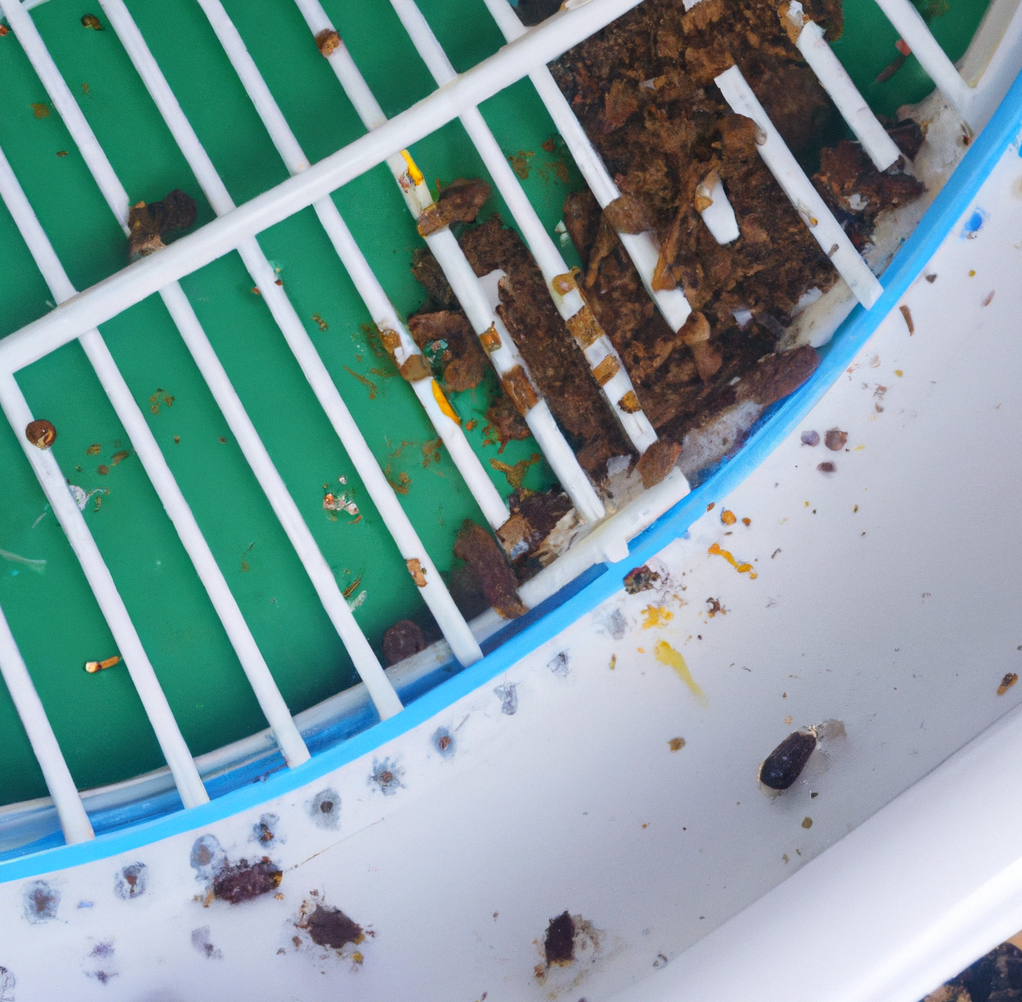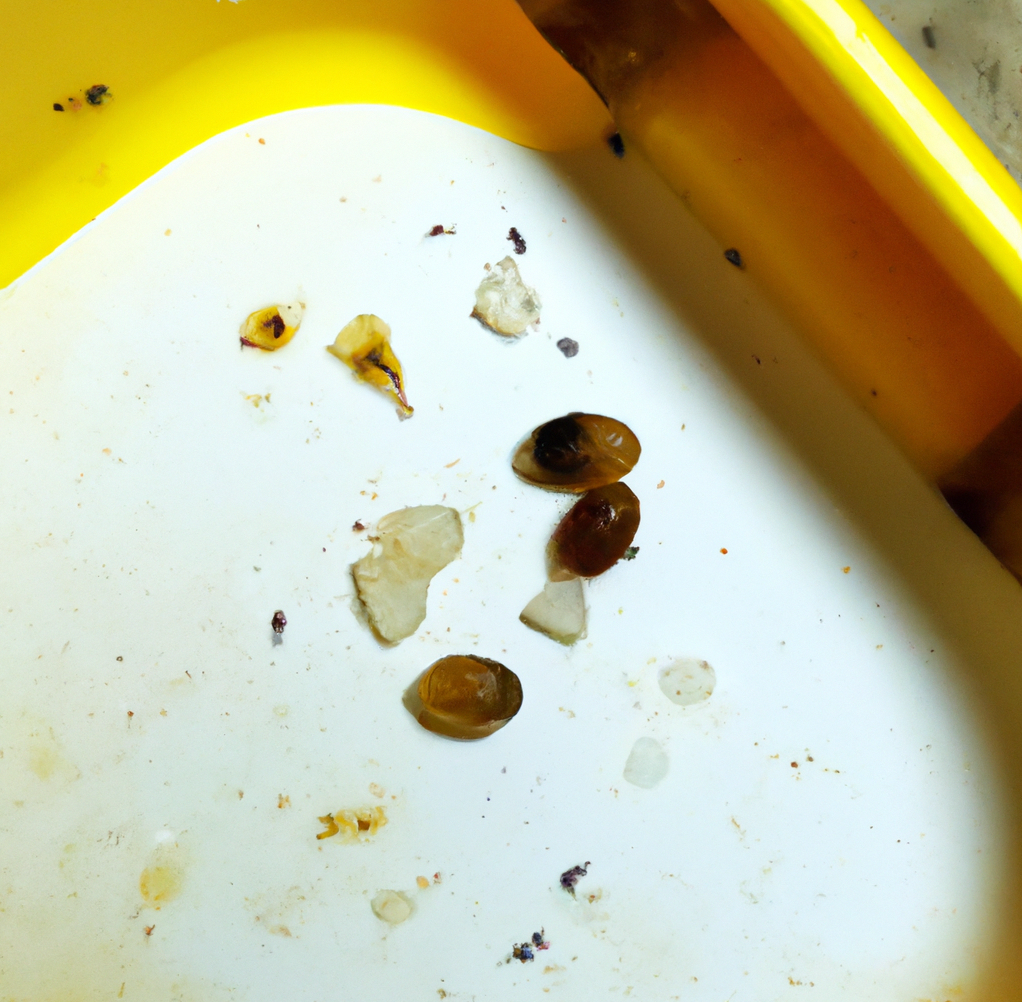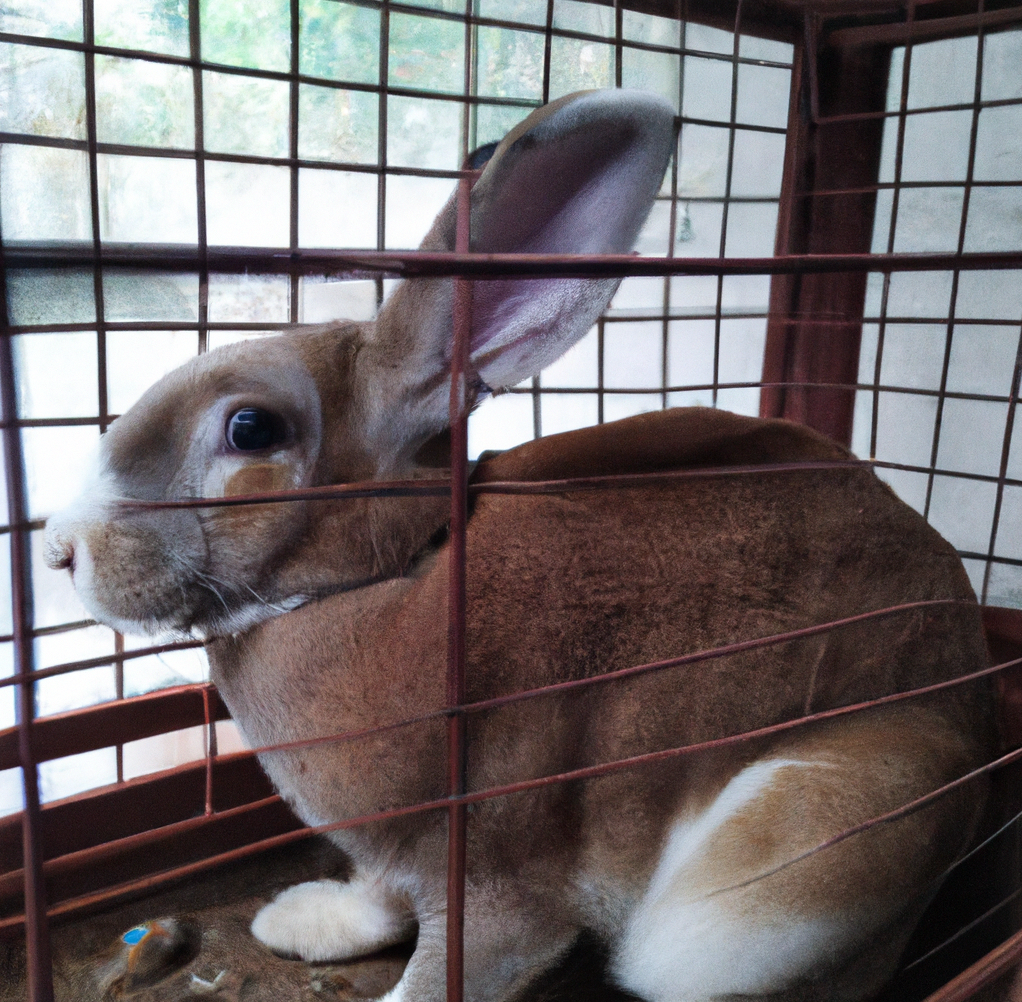Ticks are a common problem for pet rabbits and can cause serious harm if left untreated. In this guide, we will discuss how to identify, prevent, and treat ticks in rabbits. We will also address the risks of tick-borne illnesses and prevention methods to keep your rabbit safe from these parasites. By following these steps, you can help keep your rabbit healthy and happy.
How to Identify if Your Rabbit Has a Tick
If you have a pet rabbit, it is important to check them regularly for ticks. Ticks can cause extreme irritation and, in some cases, serious illness in your pet. Identifying if your rabbit has a tick can help you take the necessary steps to protect your pet’s health.
The first step to identifying if your rabbit has a tick is to inspect its coat. Ticks will cling to the fur of your rabbit and can be seen as small, dark spots. The spots might look like dirt, but if you investigate further, you will be able to tell if it is a tick. Ticks will have a small, hard body that is attached to the skin of your rabbit.
If you find a tick on your rabbit, it is important to remove it properly. You should use a pair of tweezers to grab the tick close to the skin of your rabbit and pull it out slowly and steadily. Make sure not to squeeze the body of the tick, as this can cause its head to remain embedded in your rabbit’s skin. After removal, dispose of the tick in a sealed container and wash your hands thoroughly.
If you find multiple ticks or if your rabbit is showing signs of discomfort, contact your vet immediately. Ticks can cause serious health problems and should be treated as soon as possible.
What to Do if Your Rabbit Has a Tick
If you have a rabbit that has a tick, it is important to act quickly to get rid of the pest. Ticks can cause a variety of illnesses in rabbits and can even be fatal if left untreated. Here is what you need to do if your rabbit has a tick.
1. Wear protective gloves. When removing a tick from a rabbit, it is important to wear protective gloves to avoid the possibility of being bitten by the pest.
2. Gently grasp the tick. Using tweezers, carefully grasp the tick near the mouthparts. Make sure not to squeeze the tick as it can inject more bacteria into the rabbit’s body.
3. Pull the tick away from the rabbit’s skin. Pull the tick away from the skin in a slow and steady motion. Do not twist the tick as it can cause the mouthparts to break off and remain embedded in the rabbit’s skin.
4. Dispose of the tick. Place the tick in a sealed container or bag and dispose of it in an appropriate location.
5. Clean the area. Clean the area on the rabbit’s skin where the tick was attached with a mild antiseptic.
6. Monitor the rabbit. Monitor the rabbit for any signs of illness, such as fever, lethargy, or loss of appetite. If any of these signs are present, seek veterinary advice immediately.
By following these steps, you can ensure that your rabbit is free of ticks and any associated illnesses. It is also important to keep your rabbit’s living environment free of ticks to prevent any further infestations.
How to Safely Remove a Tick from Your Rabbit

Removing a tick from a rabbit can be a tricky task, as rabbits have delicate skin and must be handled with care. If your rabbit has a tick, it is important to remove it quickly and safely to avoid potential health problems.
First, it is important to identify the tick. Ticks are dark, round-bodied parasites and can vary in size. They are typically found around the ears, eyes, and legs.
Once the tick has been identified, you will need to prepare the area. Gently clean the area with a cotton swab and warm water. You may also apply a small amount of antiseptic to the area to help prevent infection.
Next, use a pair of fine-tipped tweezers to remove the tick. Grasp the tick as close to the skin as possible and pull firmly upward. Do not twist, as this could cause the tick’s head to become embedded in the skin.
After the tick has been removed, clean the area with antiseptic. Monitor the area for any signs of infection over the next few days. If the area becomes red or swollen, contact your veterinarian for further advice.
Finally, dispose of the tick by placing it in a sealed container. This will help to prevent any potential health risks associated with the tick.
By following these steps, you can safely and effectively remove a tick from your rabbit. However, if you are unsure, it is always best to contact your veterinarian for advice.
Natural Remedies for Removing and Treating Ticks on Rabbits
Ticks can be a major problem for rabbits, as they can cause infections, create sores, and even transmit diseases. Fortunately, there are several simple and effective treatments for ticks on rabbits.
The first step in removing and treating ticks on rabbits is to locate the tick. Check the rabbit’s ears, back, and legs for any ticks. If you find one, use tweezers to grasp the tick as close to the rabbit’s skin as possible and pull it straight out. Be sure to clean the area with disinfectant afterwards.
For an effective natural remedy, steep a handful of fresh rosemary in a pot of boiling water for 15 minutes. Strain the liquid, allow it to cool, and use a cotton ball to apply the solution to the affected area. This will help to relieve itching and soothe the skin.
Another natural remedy is to mix equal parts of apple cider vinegar and water and apply this mixture to the affected area. This will help to reduce inflammation and soothe the skin.
Finally, you can use a natural tick repellent to keep ticks away in the future. Make a solution of one part oil of neem and ten parts water and spray this mixture on the rabbit’s fur. This mixture will help to repel ticks and other pests.
By following these steps, you can effectively remove and treat ticks on rabbits. Be sure to check your rabbit regularly for ticks, and consult a veterinarian if the problem persists.
Tips for Preventing Ticks from Invading Your Rabbit’s Home
1. Keep your rabbit’s habitat clean: Remove any debris and clutter from your rabbit’s habitat and keep it clean. Regularly vacuum and mop the area and make sure to discard any debris and trash. This will help reduce the number of places ticks can hide and breed.
2. Inspect your rabbit: Examine your rabbit thoroughly every day and look for any signs of ticks, such as bumps or scabs. If you notice any ticks, immediately remove them using tweezers.
3. Use tick prevention products: There are several products available on the market that can help prevent ticks from invading your rabbit’s home. These include tick sprays and collars, as well as tick repellents that can be applied to your rabbit’s fur.
4. Change your rabbit’s bedding regularly: Wash and change your rabbit’s bedding regularly to prevent ticks from living in the material.
5. Keep your rabbit away from other animals: To reduce the risk of ticks, keep your rabbit away from other animals, such as cats and dogs, which can carry ticks.
6. Trim your rabbit’s fur: If your rabbit has long fur, consider trimming it regularly. This will make it easier to spot any ticks on its fur.
7. Seal any cracks or crevices: Inspect your rabbit’s habitat for any cracks or crevices and seal them using caulk or other materials. This will help prevent ticks from entering the area.
8. Keep your yard clean: Keep your yard clean by mowing the lawn regularly and removing any leaves and debris. This will reduce the number of areas where ticks can hide.
By following these tips, you can help prevent ticks from invading your rabbit’s home and keep your furry friend safe and healthy.
Understanding the Dangers of Tick-Borne Illnesses in Rabbits

Tick-borne illnesses in rabbits can be extremely dangerous and potentially life-threatening. It is important for rabbit owners to understand the risks posed by ticks and to know how to protect their rabbits from these illnesses.
There are a variety of tick-borne illnesses that can affect rabbits. These illnesses can include Lyme disease, Rocky Mountain spotted fever, ehrlichiosis, tularemia, and babesiosis. All of these illnesses are caused by bacteria or parasites that are spread by ticks. The ticks can attach to the rabbit’s fur and feed on its blood, ultimately passing the bacteria or parasites to the rabbit.
Symptoms of tick-borne illnesses in rabbits can vary, but often include lethargy, loss of appetite, weight loss, fever, swollen lymph nodes, and joint pain. If left untreated, these illnesses can be fatal. Therefore, it is important to be aware of the risks posed by ticks and to take steps to protect your rabbit.
To help protect your rabbit from tick-borne illnesses, it is important to regularly inspect for and remove any ticks. This can be done by running your hands over your rabbit’s fur and looking for any bumps that could be ticks. If you find any, use tweezers to carefully remove them. It is also important to regularly check your rabbit’s environment for any ticks that may have infested the area.
In addition, there are several preventative measures you can take to help protect your rabbit from ticks. These include using tick prevention products, such as sprays, collars, and spot-on treatments. It is also important to keep your rabbit’s environment clean and free of potential hiding places for ticks. Finally, it is important to regularly check your rabbit for signs of illness and take them to the veterinarian if any symptoms are present.
By understanding the risks posed by ticks and taking steps to protect your rabbit, you can help ensure your rabbit remains healthy and safe.
Conclusion
In conclusion, treating ticks in rabbits is not difficult but should be done with caution and care. It is important to inspect your rabbit regularly, especially after it has been outside, to check for ticks. If you do find a tick, you should remove it as soon as possible, preferably with tweezers, and then clean the area. Additionally, you can use a flea and tick preventative to help protect your rabbit from further tick infestations. By following these steps, you can help keep your rabbit safe and healthy.

